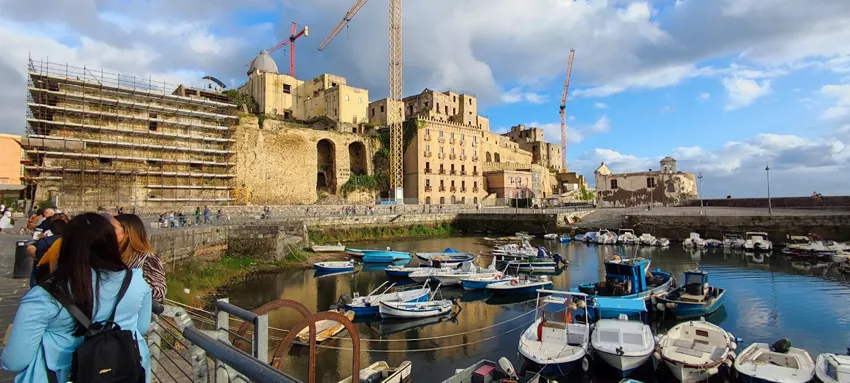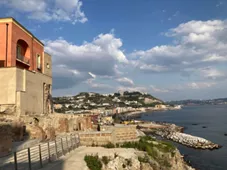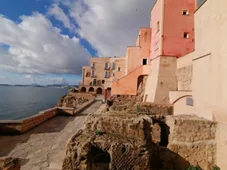


Overview
Surrounded by the sea on three sides and extremely difficult to reach, the Rione Terra fortress was the site of the Roman colony of Puteoli in 194 BC. Today's regular urban layout bears witness to the layout of the ancient city, structured according to a system of orthogonal axes with two main streets: traditionally, the decumanus maximus of the colony is identified with the artery of Via Duomo, where it is still possible to see the ancient paving stones under the modern street; the cardo maximus is identified, instead, with Via del Vescovado.
As far as the republican period is concerned, little evidence has been found so far: sections of the city walls, which followed a course dictated by the course of the tuffaceous bank, as well as some rooms with polygonal tuff walls and barrel vaults made of tuff scales, found under the Episcopio.
Numerous buildings, granaries (horrea) and shops (tabernae), rebuilt in opus reticulatum in the Augustan period, were found along the decumanus in 194 BC; the highest level of the sites is occupied by a bath complex with opus sectile floors, while the foundations consist of large cisterns excavated in the tuffaceous bank of the hill. The buildings are connected to the street by a portico formed by opus latericium pillars on piperno base cubes, dating back to the time of Nero and Vespasian.
On the north side of the same decumanus, before arriving at the city temple, there is a public building whose original function is unknown, but which in late antiquity was used as a pistrinum (milling and bread-making workshop) and equipped with millstones made of leucitic stone, found on site.
On the south side of the decumanus, at basement level, is a large complex consisting of four side-by-side cryptoporticus, oriented North/South, with a rectangular plan and barrel vault, dating back to the first decades of the 2nd century BC. In the Augustan age, a fifth cryptoporticus was added, orthogonal to the others, oriented East/West and parallel to the decumanus maximus. From this area come the 'opera nobilia' sculptures, which formed a kind of museum itinerary intended to embellish the Augustan complex of the acropolis and which are now exhibited, together with other finds, at the Archaeological Museum of the Phlegraean Fields in Baia.